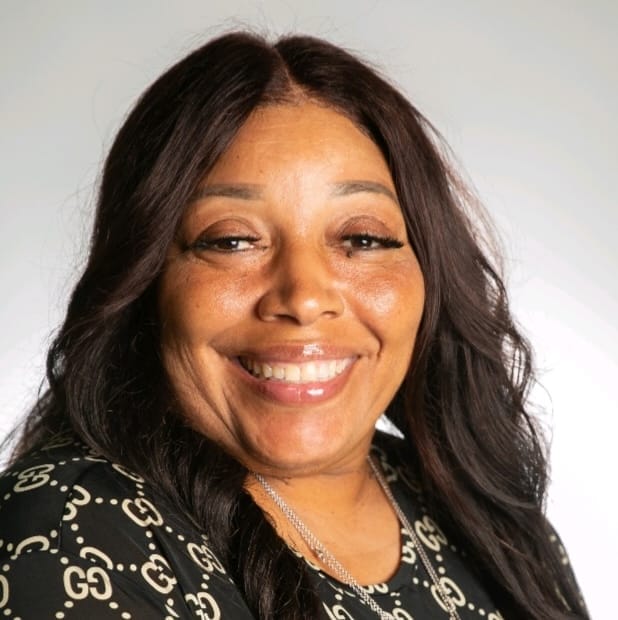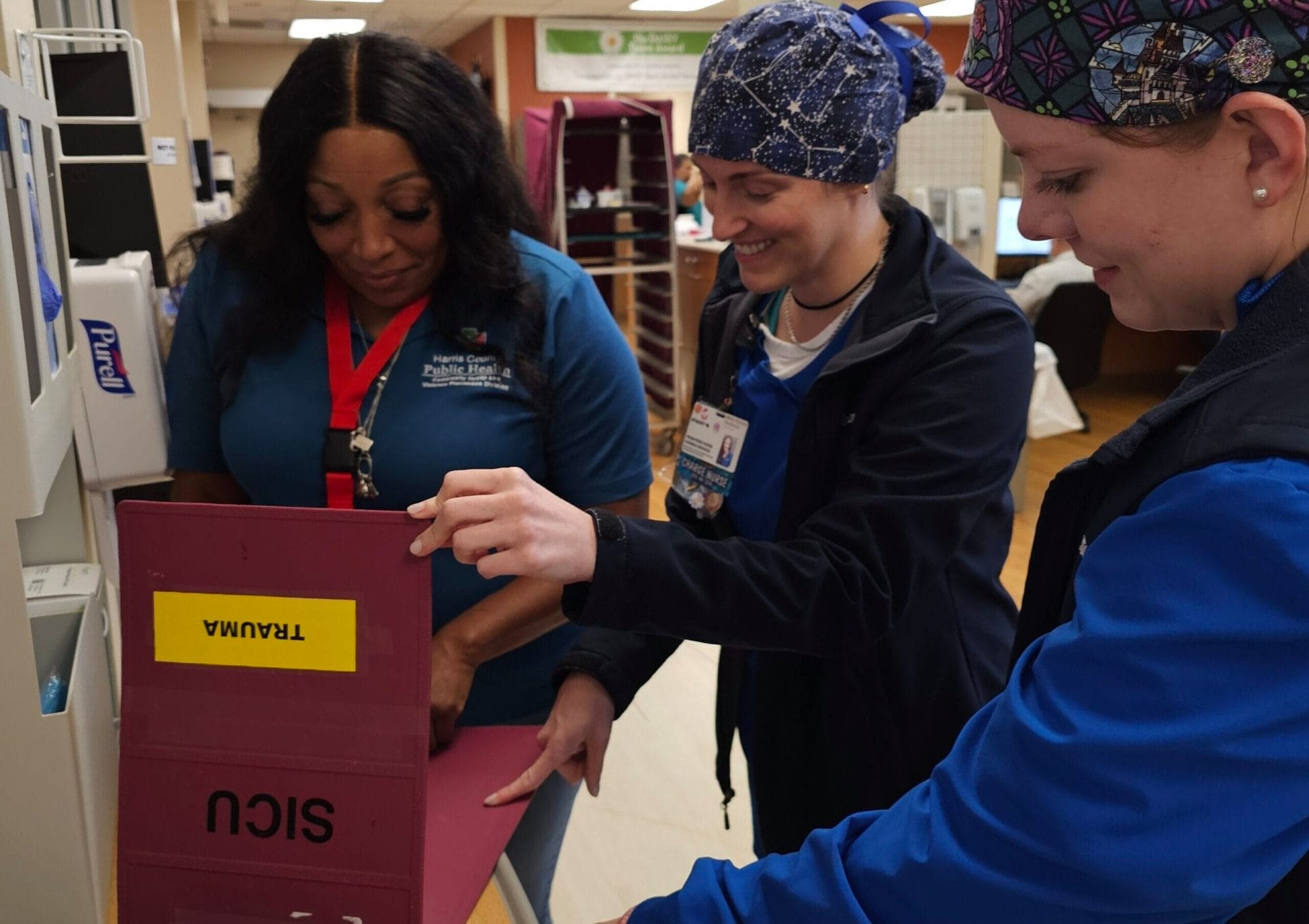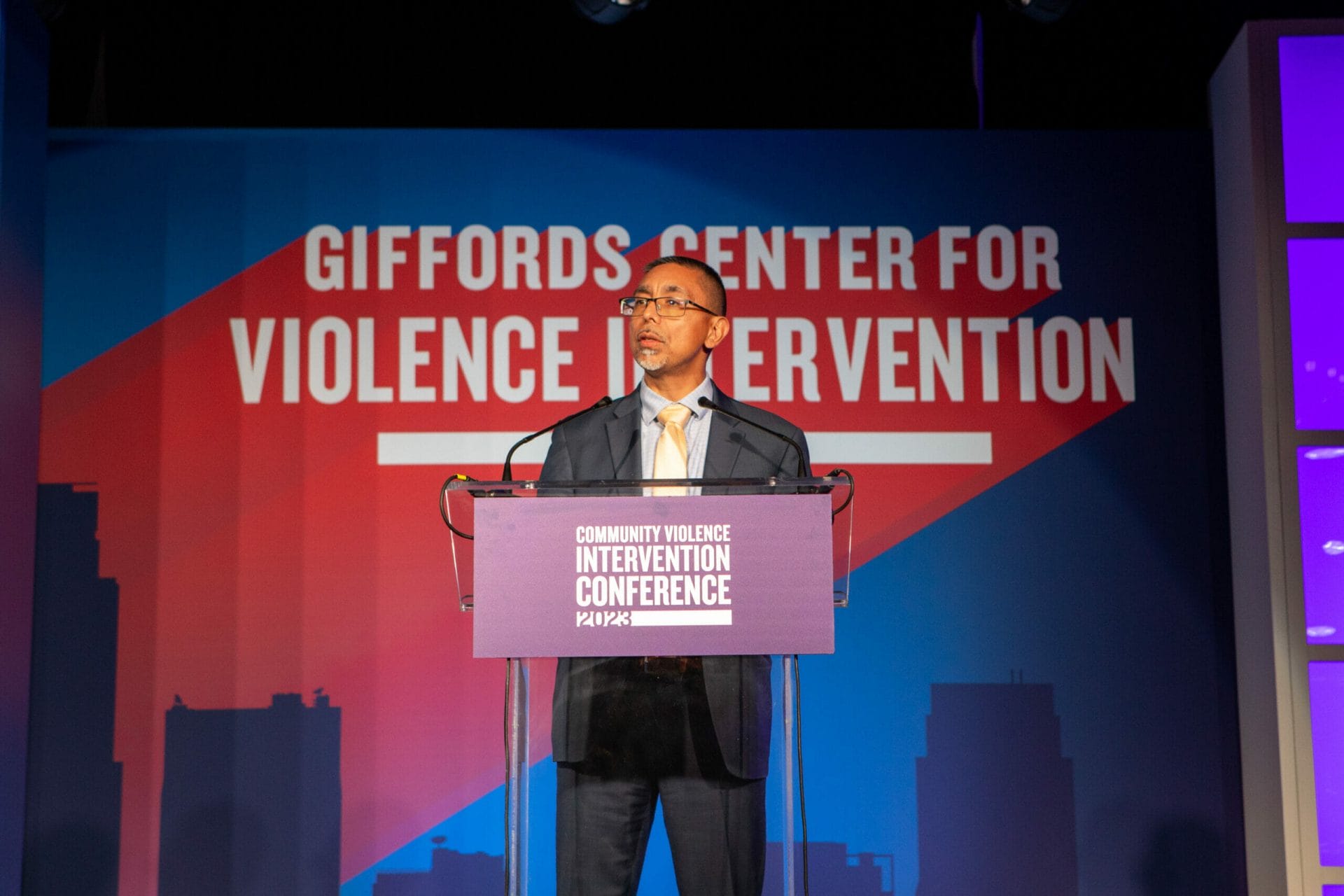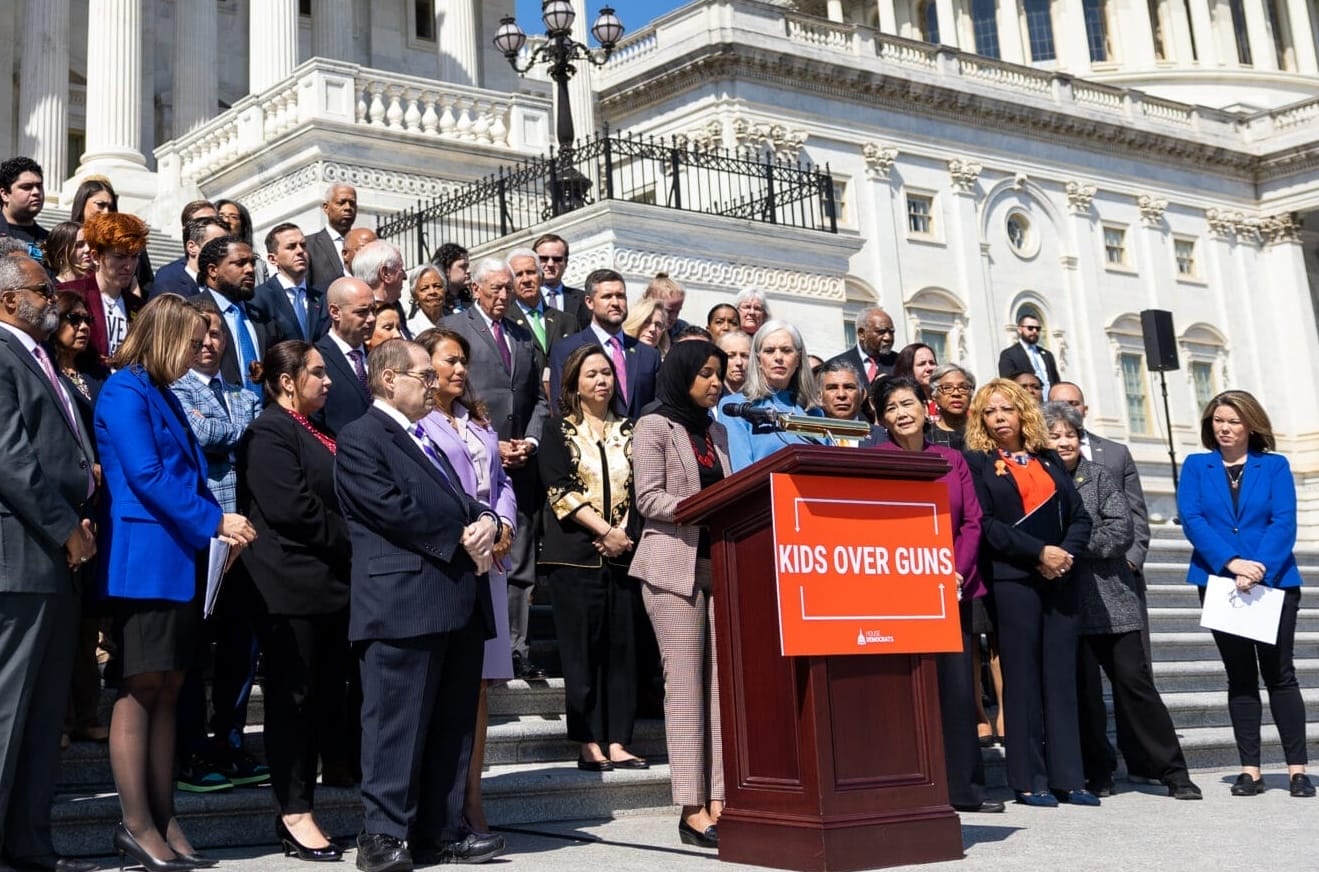Champions for Peace: A Conversation with Andrea Alexander of RISE
Community violence intervention relies on concerned individuals willing to serve as peacemakers within their communities. They work tirelessly to prevent violence by engaging those at highest risk of using or being injured by a gun to alter the trajectory of their lives and curb the spread of violence. In this series, we hope to highlight the invaluable contributions of CVI workers and foster a deeper understanding of CVI from the perspective of the frontlines.
Our Champion for Peace this quarter is Andrea Alexander, an outreach specialist for Relentless Interrupters Serving Everyone(RISE)’s hospital-based violence intervention program. RISE is a program in the Community Health and Violence Prevention Services Division (CHVPS) at Harris County Public Health in Houston, Texas.
This interview has been edited for length and clarity.
Outreach Specialist, Relentless Interrupters Serving Everyone(RISE) | Houston, Texas

GIFFORDS CENTER FOR VIOLENCE INTERVENTION: What does community violence intervention mean to you?
ANDREA ALEXANDER: To me, community violence intervention means developing strategies to reduce gun violence by meeting people where they are and offering them alternatives to using a gun.
What brought you to this work?
I’ve been doing this work my entire life. My mom was the neighborhood mom, so this kind of community support has always been part of who I am. I feel like God gave me this job. When I interviewed for this position, it felt like a “Welcome Home!” moment. God knew what I was doing, and he placed me at HCPH so I could continue doing what I love—serving and helping people, creating new beginnings, and helping others restart their lives.
What motivates you to keep going?
Results! Seeing positive outcomes motivates me every morning. For example, when two people in a neighborhood are bickering and you know the situation could escalate quickly, being able to step in, resolve the conflict, and prevent an injury is what drives me. Stopping people from shooting or killing each other and offering them different ways to handle conflicts—like having a dance battle or a rap battle, or even cleaning yards together—shows that there are alternatives to violence. I have three kids of my own, and every time I’m out there, I put myself in the shoes of the parents and grandparents. I think, “What if this were me?” That keeps me going. It keeps me on my toes and helps me push through each day. If I can help, count me in!
I’ve been doing this work for years—helping with resources and always being there to listen. What keeps me motivated is the ability to assist and support people during crucial moments.
What do people need to know about understanding and addressing violence?
First of all, you have to meet people where they are and recognize that they are in crisis. Not everyone knows how to navigate hard times, trouble, or confusion, and many organizations just give people a phone number or a QR code and expect them to figure it out. I’ve learned that by taking the time to listen, to be present, and to walk people through things step by step—like helping them fill out applications or answering their questions—you can make a real difference. I’ve been there, and I know what it’s like to go without. Some people will never understand that, but that’s why I’m here—to be a voice for those who need it.
Can you share a story about a time when you felt the impact of your work or the work of your colleagues in the community?
One moment that sticks with me is from July 4, 2022, when three teenagers were shot. I was there when the parents arrived to check on their children, only to find out that two of them had passed away. Hearing the screams of those parents was absolutely devastating.
What is the hardest part of your job?
The hardest part of my job right now is making sure resources are available in times of crisis. Many organizations require you to be involved with them for 30 days before offering assistance, but what happens when someone needs immediate help and can’t find it? What happens when a mother with kids is put out on the street and all the shelters are full? There have been so many days where I’ve had to find immediate resources to address critical situations.

What is your biggest hope for the future of your work and the field of community violence intervention?
My biggest hope is to stop gun violence by getting to the root cause of it and creating immediate help for those who need it. I envision teaming up with community organizations that are willing to put on boots, gloves, and whatever else is needed to provide real support to stop gun violence. I love what I do, and I pray that others share the same passion.
As women are often underrepresented in this work, can you share how being a woman impacts your work or approach?
Being a woman helps me bring a nurturing presence to my work. I give off that mother, sister, aunt, or cousin vibe when I’m around people, which makes them feel loved and supported during difficult moments. Sometimes, simply holding someone’s hand or wrapping your arms around them when they’re scared can make all the difference.
Thank you, Andrea Alexander and the entire RISE team. We look forward to bringing you more conversations with other dedicated peacemakers.
STAY CONNECTED
Interventions are most effective when they are supported by strong community networks. Sign up for Giffords Center for Violence Intervention’s newsletter to learn more about what’s happening in the field, relevant legislation, and funding opportunities.


SPOTLIGHT
TRACKING CVI LEGISLATION
Community violence intervention is a crucial approach to fighting gun violence. Keep up to date on the latest CVI legislation in your state with the Giffords Community Violence Intervention Policy Analysis & Tracking Hub—CVI-PATH.
Read More